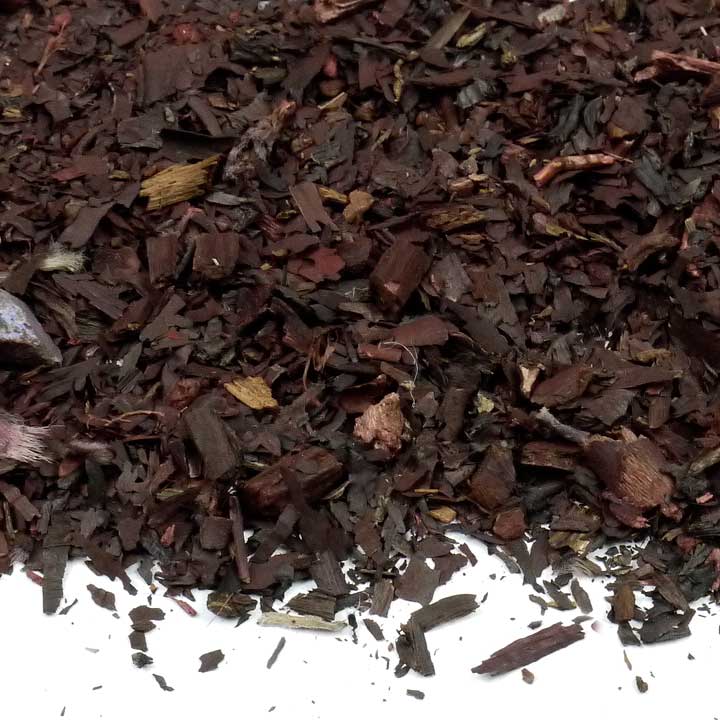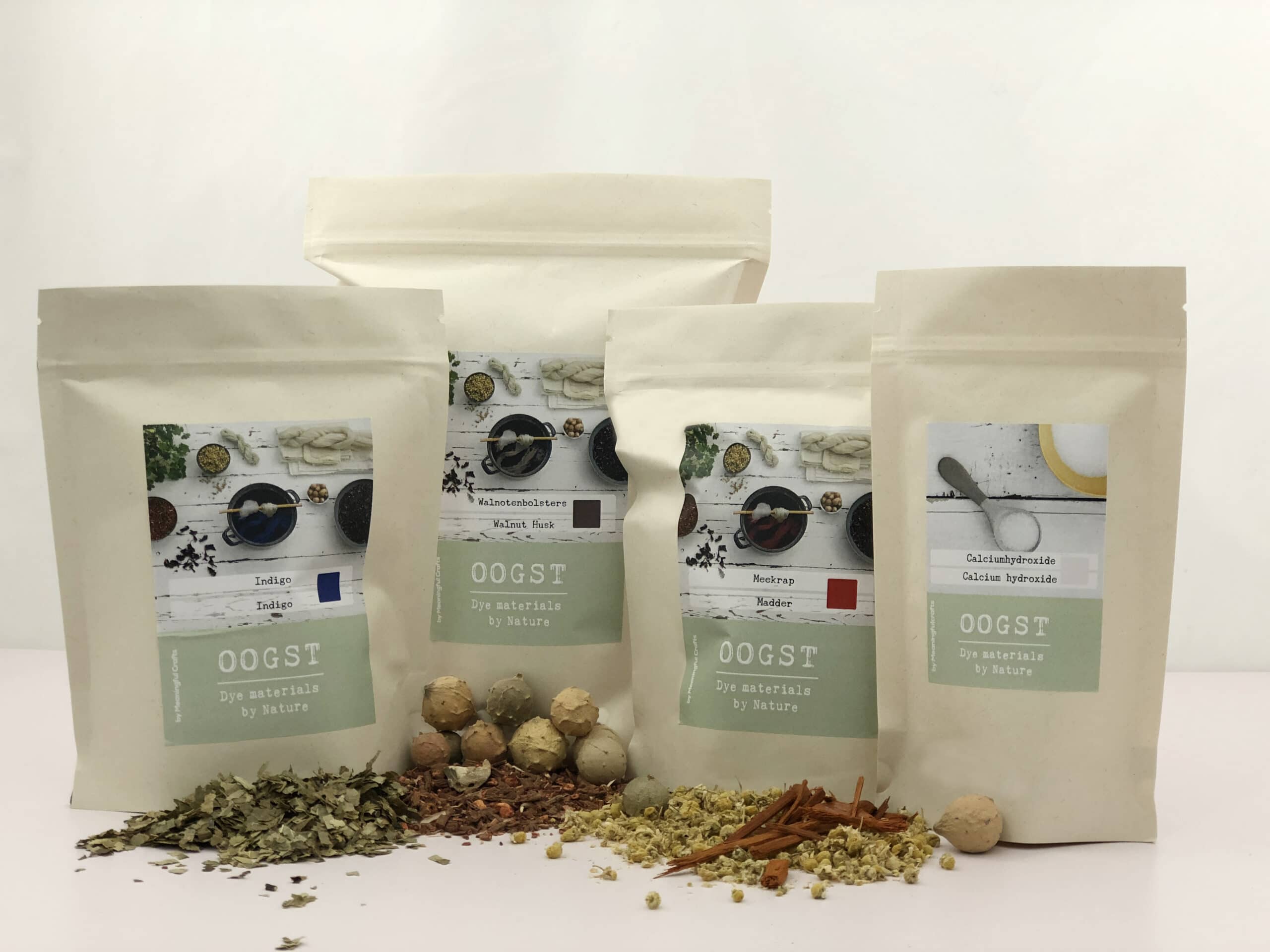Recipe
Basic recipe for 100 grams of wool, silk or cotton to dye purple
Necessities:
- 50 g ox tongue root
– 15 grams of alum
– 2 grams of tartaric acid
- 50 ml alcohol 96%
– electric stove or stove
– 2 old (cast iron) pans
– apron, gloves
– laundry bag or cheesecloth
– (glass) jars, buckets or trays
– 1 cup vinegar
– 2 cups of household soda (if you are going to dye cotton)
Step 1: Wash (only if you are going to dye cotton, skip step 1 if you are going to dye wool or silk)
Fill a bucket with plenty of water and 2 cups of household soda and leave your cotton in it for 24 hours. Rinse well the next day.
Prepare in advance: Ox tongue root dissolves in alcohol. Water carries it but does not remove the dye. Therefore, soak the ox tongue root in 50 ml of alcohol 96% for 2-3 days. Make sure you put it in a sealable jar because alcohol evaporates.
Step 2: pickling
Dissolve the alum and tartaric acid in a pot of hot water. Put 3-5 litres of water in the (pickling) pan and add the mixture of alum and tartaric acid. Soak the wool, silk or cotton in a bucket of water and when completely soaked, add them to the pickling pan. Bring the temperature to 80 degrees (not hotter). Let this simmer for over an hour. Then let the fibres cool slowly in the pickling bath. You can leave this overnight or get started immediately.
Step 3: Dyeing
Pour the extract of the ox tongue root through a wash bag into the paint pan and top it up with 3-5 litres of water. Also put your wash bag with ox tongue root in the paint pan.
Bring the dye bath to 60 degrees (no hotter) and simmer for an hour.
Lower the temperature to 30 degrees (Tip to speed up this process: put your pan in the sink with cold water) and add the wool, silk or cotton.
You can leave the ox tongue root in the wash bag in the dye bath during dyeing. Just make sure the fibres can 'swim' properly. Bring the temperature back up to 60 degrees (not hotter) and simmer for an hour.
Let the fibers cool slowly in the dye bath.
MC tip:
After cooling, leave the fibres in the dye bath for an extra night.
Step 4: Fix
Rinse the fibers and let it sit in a bucket of water with 1 cup of vinegar for an hour. Then rinse well and hang to dry.





Mona Masuyama (verified owner) –
Good, but the colour didn't turn out purple but brown.... Maybe it's just because of my technique....